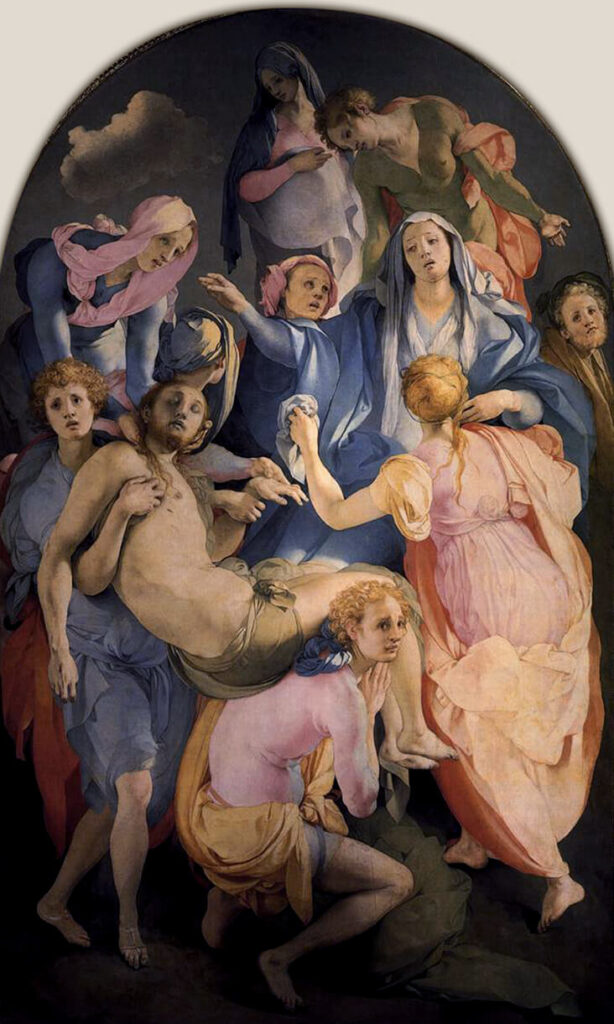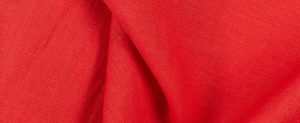Turbulent Times: Fabrics in Italian Mannerist Art
The flowing, ostentatious language of Mannerist art in the 16th century grew out of the High Renaissance. But Renaissance naturalism and realism was replaced by heightened, exaggerated drama, and fabric played a vital narrative and compositional role. Moving beyond reality gave artists a newfound, expressive freedom, and drapery was given a life of its own, swirling with turbulent energy into mystical skies or sweeping sensuously over nearly naked flesh. The way clothing adorned fully dressed figures also changed, ranging from bodies heavily adorned with unnatural amounts of fabric to those decorated into the most lavishly textured surfaces, including lace, silk and satin, a showcase for virtuoso artistic talent. Art historian Anne Hollander, who curated Fabric of Vision: Dress and Drapery in Painting, at London’s National Gallery in 2002, describes how, “Artists stopped being faithful to the way actual cloth behaved, and began to use painted folds for expressive or allusive drama.”
Mannerist art grew out of a turbulent time when society had been torn to pieces by the Reformation, the plague and the Sack of Rome. The asymmetry and heightened drama of Mannerist art reflected these unstable times, building on the astonishingly lifelike language of the High Renaissance and transforming it into a supernatural version of reality. Italian artist and art critic Giorgio Vasari was a particularly outspoken advocate for this new art, calling for all artists to explore a new kind of imaginative invention and virtuoso technique in all forms of art. He described the new styles of art he and his contemporaries were creating as “la maniera moderna”, which was the origin for the term Mannerism.
One of the most influential painters to develop the Mannerist style in Parma and Rome was Parmigianino. Influenced by the idealised beauty of Michelangelo and Raphael, he produced his world-famous Madonna of the Long Neck in 1534. Bodily proportions in his mother and child are deliberately elongated to heighten their refined elegance, while the ivory and blue clothing adorning her body appears as thin and fluid as water, slipping over her knees and lapping around the Christ child’s body like a gentle caress. Behind her, blue fabric billows out into a huge, voluminous puff that is filled with foreboding darkness, as if predicting the cruel, yet unknown fate to befall them.
For the Florentine painter Pontormo, drapery in pale, pastel sweet shades of pink, blue, lilac and green formed a visual transcendence from ordinary life. His dazzling depiction of the traditional Biblical story in The Deposition from the Cross, 1528, adorns Biblical figures with heavenly, sky-blue drapes that are as wispy and light as the air, sweeping gently across bodies and lending them a ghostly, supernatural aura.
Like Pontormo, colour was vital to Venetian painter Paolo Veronese, but his drapes were more finely detailed to accentuate surface pattern, texture and detail. In Happy Union, 1575, we view this unknown story from an unusual, tilted viewpoint, and it is likely it was designed to adorn a ceiling. From this angle, the artist delights in the decorative surface of falling heavy fabric, as it sumptuously creases into heaps and piles. His female character wears rose tinged, satin fabric with glistening gold embroidery, while his male lead wears a green tunic shot through with gold décor that sparkles in the light, echoing the zesty lime green of his dazzling silk sash.
Jacopo Tintoretto also led the Mannerist style, absorbing earlier influences from the anatomical accuracies of Michelangelo and combining them with the vivid colours of the Venetian School. His Miracle of the Slave, 1548, is a mesmerizing feast of colour, movement and light, as drapes across the dynamic, crowded scene. Saint Mark is seen flying through the centre of the scene to rescue a martyred slave, while his billowing clothes fly out around him as if caught in the wind. Below him, vivid drapes in green blue and red fall in and out of shadow as they twist, stretch and crumple across the crowded scene, lending it angry, animated movement and emotional tension; it was exactly this wild, free and creative exploration of fabric that led the way for the Baroque period that followed, which was fuelled by the same emotionally charged, dynamic and unstoppable energy.















































Leave a comment